The cities of tomorrow are shaped by the informal settlements. According to Robert Neuwirth there are 1 Billion squatters on the planet. That is 1 on 7 people on the planet. The statistics show that there will be 2 billion in 2030, and 3 billion in 2050, or 1 on 3 people on the planet. The mosaic habitat is an attempt to respond to this.
The informal housing or Gecekondu in Istanbul is a spontaneous response to the massive growth the city knows since 1945. Due to the high unemployment rate the informal settlers have a very low or no income. The Gecekondu settlements are uncontrolled, poorly built and present severe risks in case of earthquakes and strong rains, common in Istanbul.A safe and controlled solution must be found for these new settlements. An attempt to this is made by the Toki typology. The government replaces informal houses by cheap monofonctional housing blocks.
The problem with Toki is that the informal housing culture, living structure of these informal communities is erased from the map. They are replaced by modern monofunctional blocks of apartments. The inhabitants have to buy their new units. Due to their low and irregular income they can only afford small apartments to host their large family. The rigid structure of this typology makes it impossible to evolve over time.
Another problem appears when purchasing apartments: Some inhabitants need to get a loan to pay their new home, but due to the irregularities of their income they can end up selling their houses to pay the debts. What I propose is a participative project. The project integrates the need for dense, cheap settlements with the spontaneous housing typology. Basically a strong and simple structure is built with the basic needs in water and electricity. It provides the necessary infrastructure in case of earthquakes and heavy rains. The residents use this platform to build their own houses on. To make the initial costs drop for the inhabitants, there are community spaces placed on regular intervals with community kitchens and bathrooms. These are for the inhabitants who cannot afford it or for those who did not make the investment yet. It makes it possible for everyone to buy larger spaces and be flexible over time when a later investment can be made.
What I propose is a participative project. The project integrates the need for dense, cheap settlements with the spontaneous housing typology. Basically a strong and simple structure is built with the basic needs in water and electricity. It provides the necessary infrastructure in case of earthquakes and heavy rains. The residents use this platform to build their own houses on. To make the initial costs drop for the inhabitants, there are community spaces placed on regular intervals with community kitchens and bathrooms. These are for the inhabitants who cannot afford it or for those who did not make the investment yet. It makes it possible for everyone to buy larger spaces and be flexible over time when a later investment can be made.
The inhabitants who cannot afford the space will get a flexible loan that has similarities with micro-credits. The inhabitants will have the opportunity to work through an open marketplace, workshops, ateliers, shops, urban agriculture and educational space. These can all help to build up a regular income for the inhabitants of the project or the neighborhood.
The educational space can be used by young students to have a place to make their homework because of the lack of space in the very dense Toki settlements. It also hosts the courses on the basics of construction and guidance workshops by the architect for the construction of the individual homes.
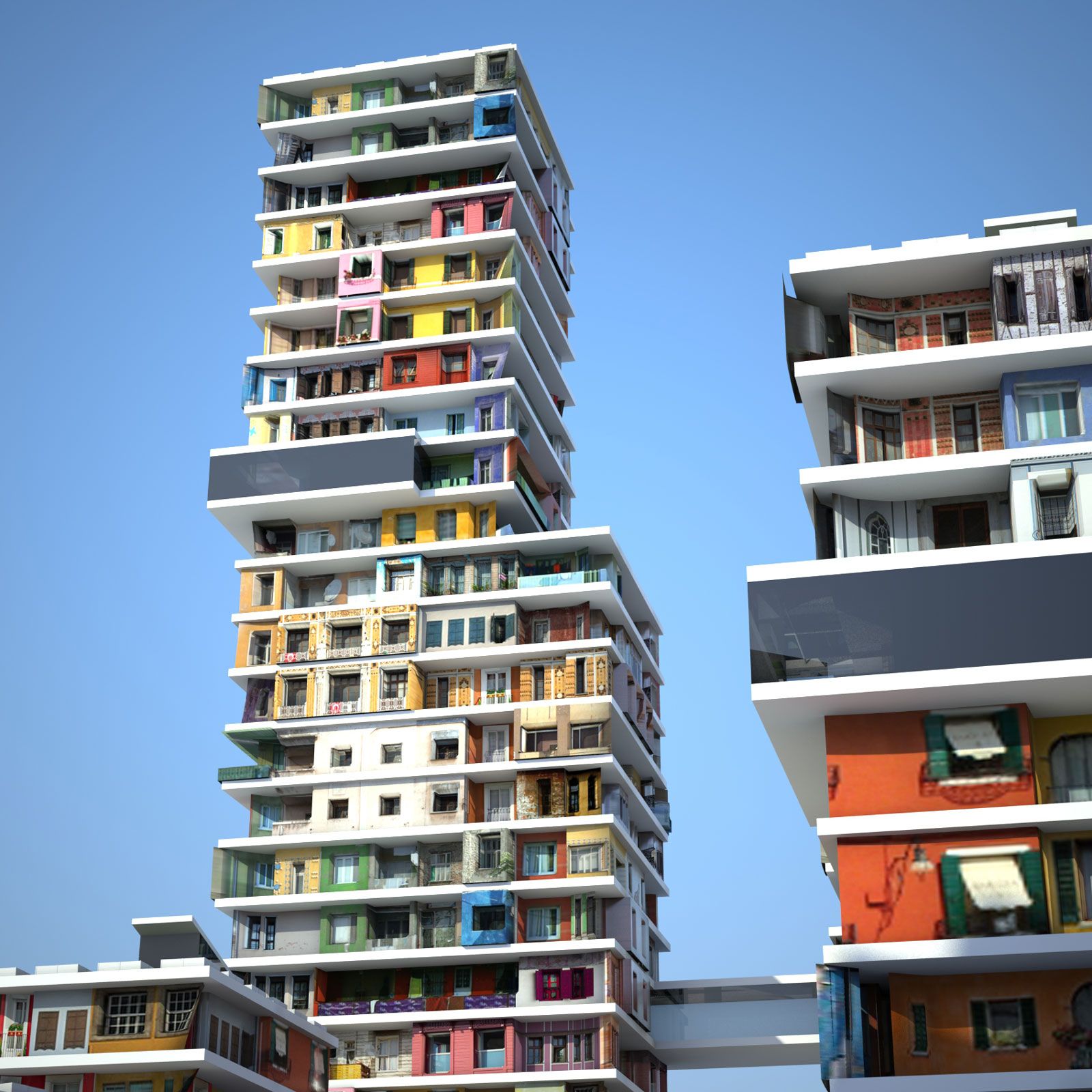
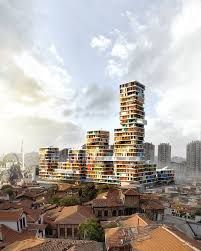
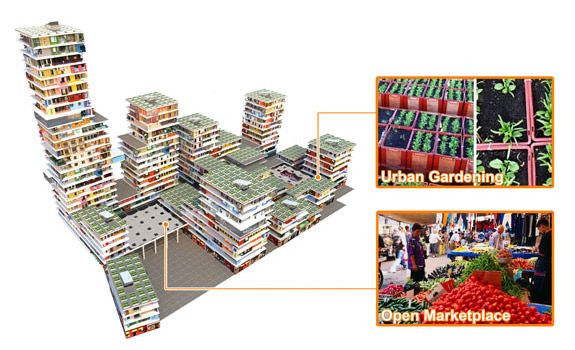
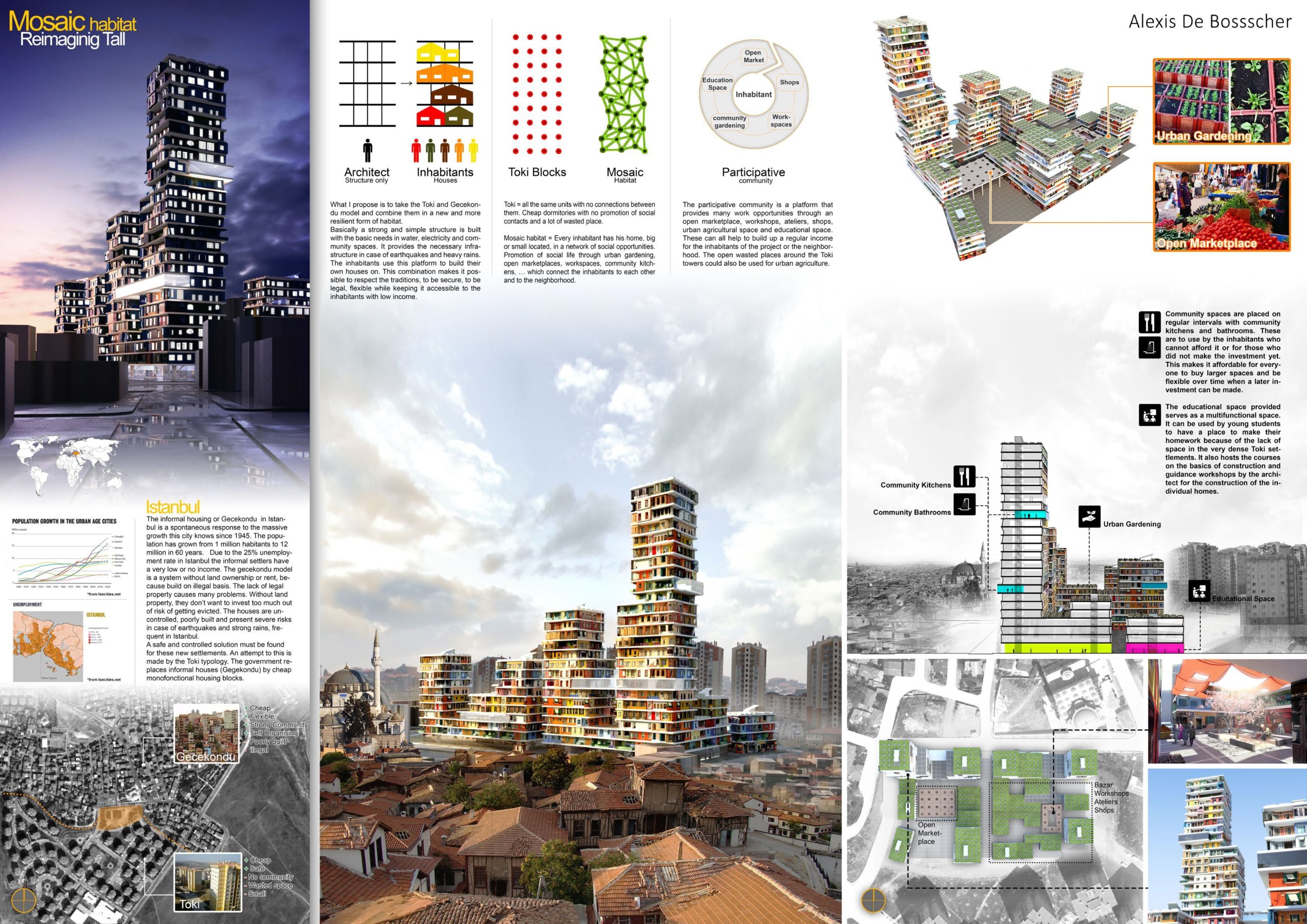
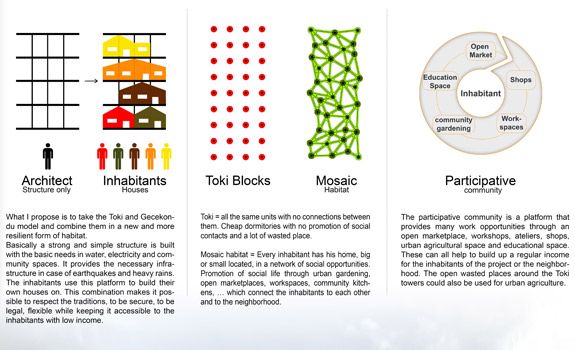
Courtesy of Alexis De Bosscher
Project: “Mosaic habitat, reimagining tall”
Designer: Alexis De Bosscher.
School: Ucl loci Bruxelles ( The project produced while in Erasmus in Germany at the KIT Karlsruhe- The project awarded the first place at the 2nd CTBUH International Student Design Competition)


